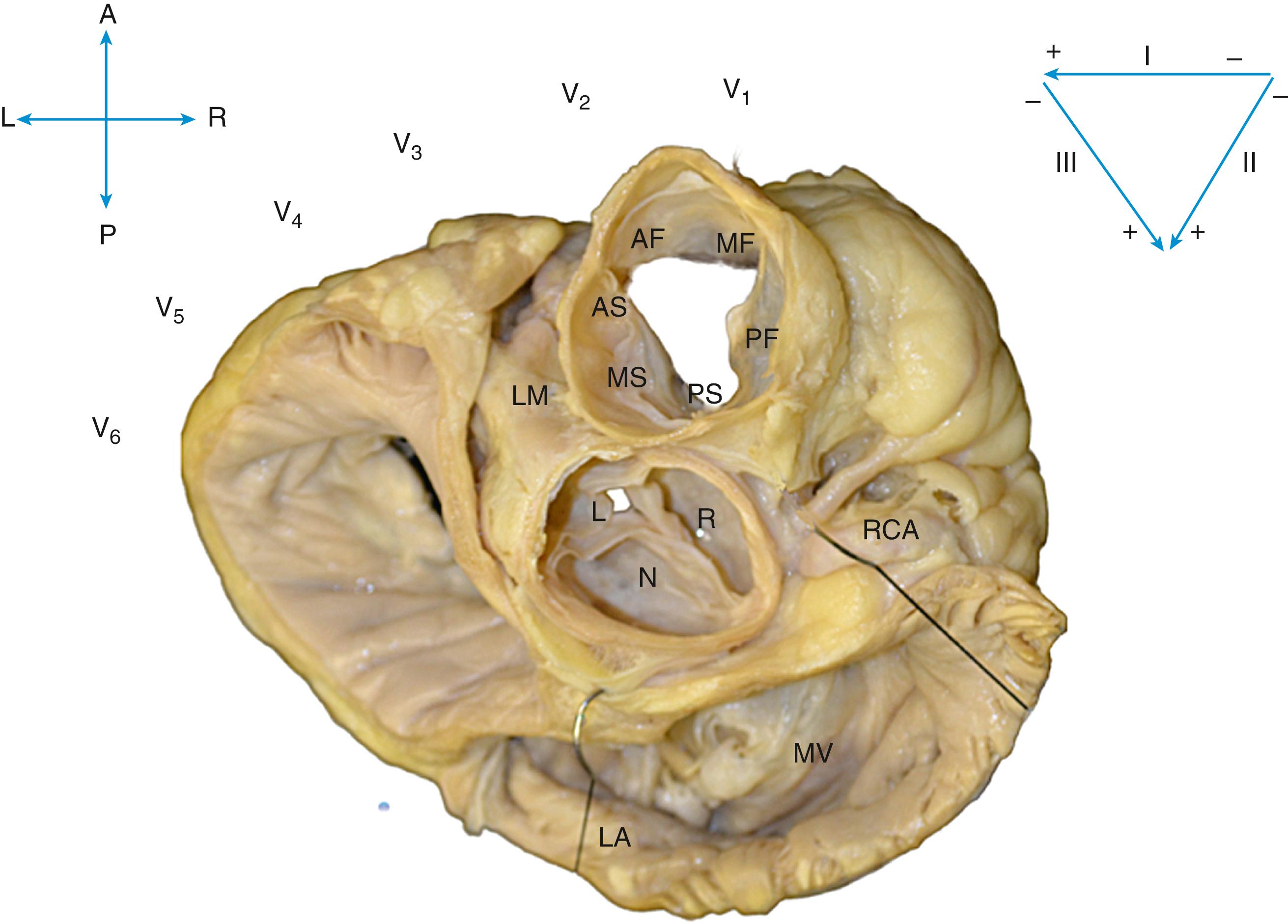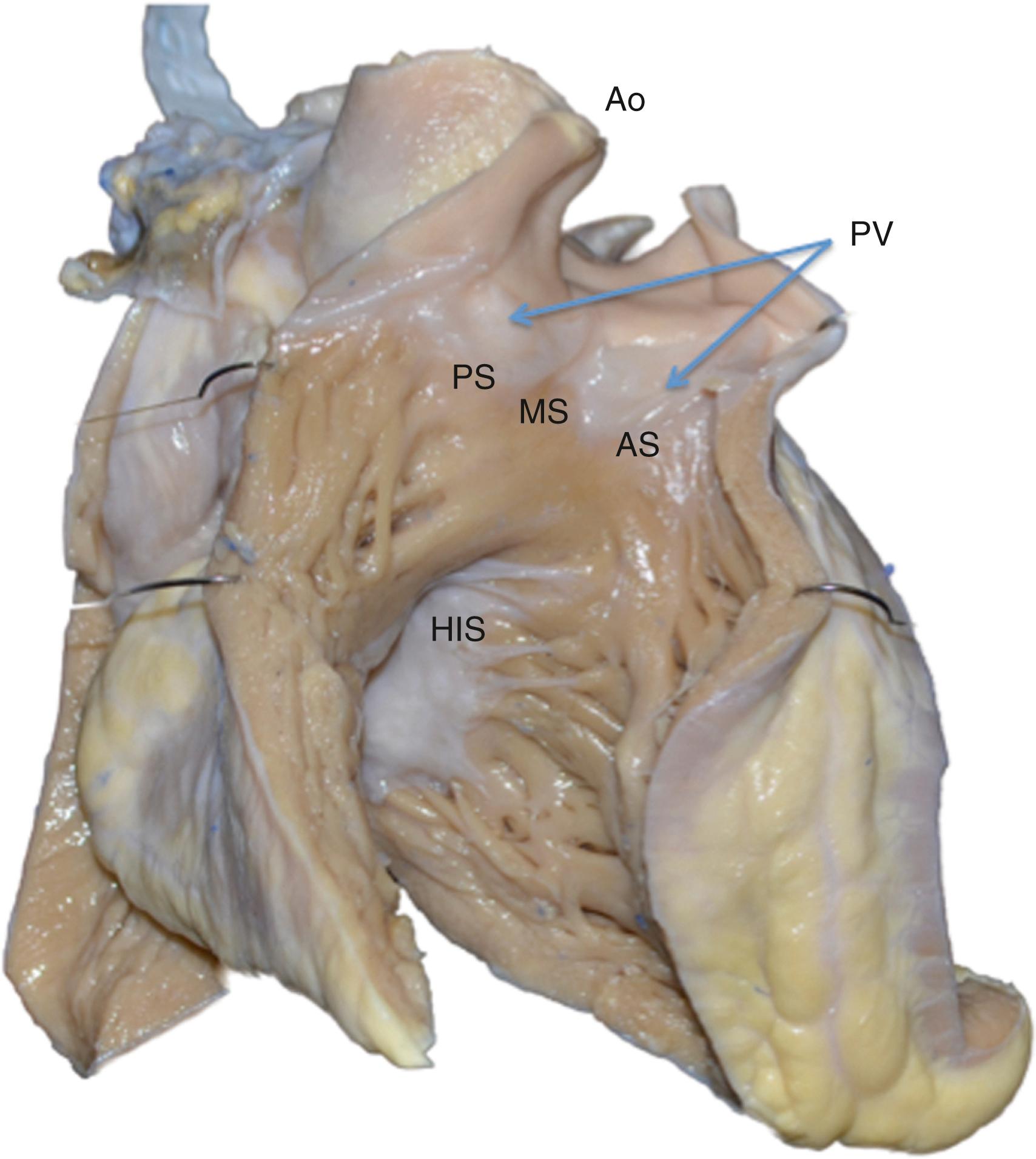Physical Address
304 North Cardinal St.
Dorchester Center, MA 02124
Idiopathic ventricular tachycardias (VTs) typically occur in the absence of structural heart disease and can originate from multiple anatomic regions, including the left ventricular outflow tract (LVOT) and right ventricular outflow tract (RVOT), the left fascicular system, the mitral and tricuspid annuli, and the papillary muscles, or they can develop in the perivascular epicardial space. More than half of all idiopathic VTs originate from the outflow tracts (OTs) and, of these, approximately 80% originate from the RVOT. The remainder originate from the LVOT, which is located immediately posterior to the RVOT and includes the aortic sinuses of Valsalva, the ventricular myocardium just inferior to the aortic valve, the aortomitral continuity (AMC), the superior basal septum (ventricular summit), and the epicardial OT surface. OT arrhythmias can present as isolated premature ventricular complexes (PVCs), nonsustained VT, or sustained VT. Symptoms of OT VT vary widely and may include palpitations, presyncope, or syncope. Since OT VTs were initially described, significant advances in understanding their mechanism, pathophysiology, and treatment have been made. This chapter reviews the anatomy, epidemiology, mechanisms, diagnosis, prognosis, and management of OT PVCs and VTs.
The RVOT is generally divided into free wall and septal regions and then subdivided within each region into anterior, mid, and posterior ( Fig. 81.1 ). The RVOT courses anterior and leftward of the LVOT, with the distal RVOT and pulmonic valve located leftward of the distal LVOT and aortic valve, respectively. The pulmonary valve is superior to the aortic valve, such that the posteroseptal RVOT is immediately anterior and adjacent to the aortic valve, specifically the right coronary cusp (RCC). Its inferior and most rightward portion is continuous with the tricuspid annulus and the interventricular septum, where the bundle of His and the proximal right bundle branch are located, whereas its most superior and leftward portion is above the anterior pulmonary valve leaflet ( Fig. 81.2 ). Although the RVOT is muscular throughout, it is relatively thin in the free wall and immediate subpulmonary valve portions and thicker in the proximal posterior portion, where it is directly opposite the LVOT and the anterior interventricular septum.


The left main coronary artery arises from the left coronary cusp (LCC), adjacent and immediately posterior to the RVOT below the pulmonary valve; therefore the potential for left main arterial injury exists during ablation in the LCC, in the septal and posterior regions of the RVOT (see Fig. 81.1 ), or during ablation within the pulmonary artery (PA) itself. The left main coronary artery courses laterally relative to the RVOT as it branches into the left circumflex and left anterior descending arteries. Because the RVOT courses leftward, the right coronary artery, arising from the RCC, is closest to the proximal RVOT near the tricuspid annulus.
Unlike the entirely muscular RVOT, part of the LVOT is muscular and part is fibrous. Most of the RCC and the anterior aspect of the LCC lie above the muscular (anterior) portion of the LVOT. The junction between the RCC and the noncoronary cusp overlies the membranous interventricular septum, where the bundle of His and the proximal left bundle branch are located. The noncoronary cusp and the posterior aspect of the LCC are continuous with the fibrous AMC in the posterior portion of the LVOT.
The ventricular myocardium extends beyond the semilunar valves into the proximal PA and the aortic valve cusps and can be found both between and within the cusps. Some cases of myocardial sleeves in the region of the coronary artery have also been reported. , Because the pulmonary valve is superior and leftward of the aortic valve, the RVOT beneath the pulmonary valve is at the same level as the aortic cusps. The RCC and the junction between the LCC and RCC lie immediately adjacent to the posterior RVOT, beneath the pulmonary valve. Myocardial sleeves are found most often in the RCC and less commonly in the LCC. The noncoronary cusp lies posterior and immediately adjacent to the interatrial septum; therefore its myocardial sleeves may be a site of origin for atrial tachycardias but only rarely for idiopathic VT.
Approximately 9% of idiopathic VTs originate epicardially, most often near coronary venous sites: the great cardiac vein (GCV), the anterior interventricular vein (AIV), and the middle cardiac vein (MCV). Immediately distal (in the retrograde direction to blood flow) to the coronary sinus ostium, the coronary sinus gives rise to the MCV, which courses in the posterior interventricular sulcus. The coronary sinus courses in the inferior aspect of the atrioventricular groove parallel to the mitral valve annulus and ends at the valve of Vieussens in the region of obtuse marginal arteries. Beyond the valve of Vieussens, the vein continues as the GCV, coursing epicardially directly over the lateral mitral annulus. The junction of the AIV and the GCV is immediately lateral to the LCC. Proximal to distal, the AIV is adjacent to the posterolateral subvalvar RVOT, or the epicardial lateral RVOT, and to the anterior epicardial space. Transpericardial mapping of the origin of epicardial idiopathic VTs has confirmed their propensity for origin near these perivascular structures.
Become a Clinical Tree membership for Full access and enjoy Unlimited articles
If you are a member. Log in here